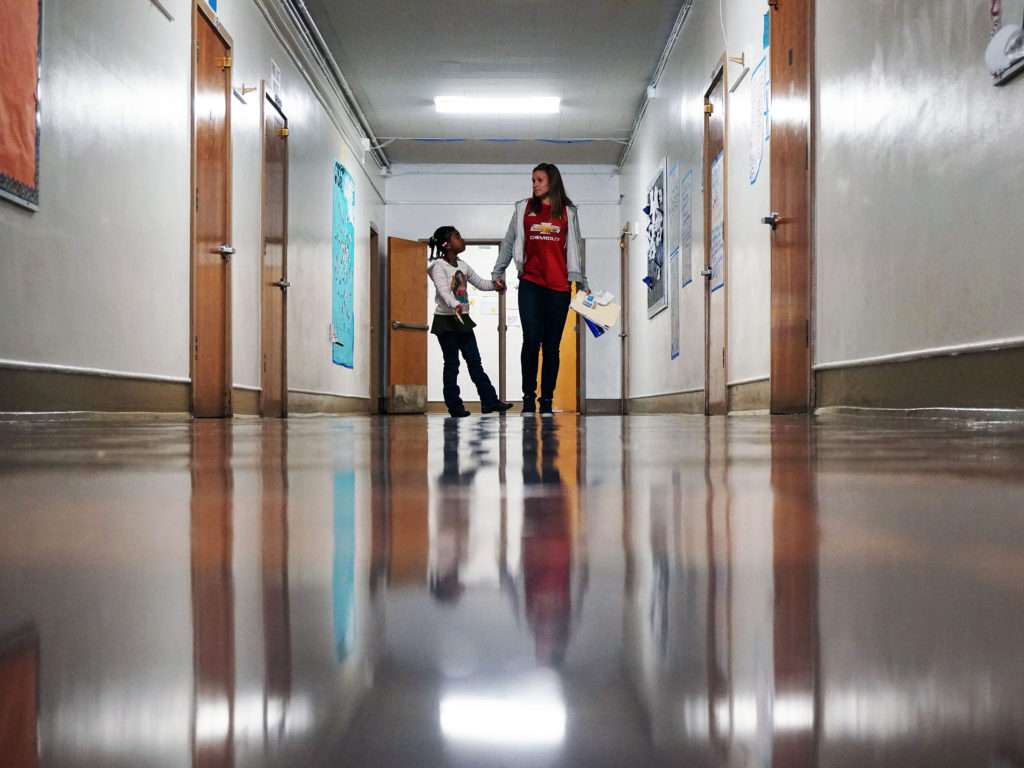
Black teachers: How to recruit them and make them stay

Lessons in higher education: What California can learn

Keeping California public university options open

Superintendents: Well-paid and walking away

The debt to degree connection

College in prison: How earning a degree can lead to a new life

The pandemic has given us all a taste of forced isolation. We’ve seen how it can leave individuals feeling lonely, scared and depressed.
Imagine if that was your permanent experience.
For many students with disabilities, isolation is the standard practice, as they are routinely educated in settings away from their nondisabled peers with little regard for the detrimental outcomes.
According to a 2020 Policy Analysis for California Education report, California has one of the lowest rates of inclusion of students with disabilities in the U.S., and students with disabilities are routinely placed in segregated classrooms and schools. To some degree, this is rooted in a preparation system that separates students training to be general education teachers and special education teachers into silos at the university. As a result, attitudes about inclusion are rarely challenged, and candidates pursuing a teaching credential aren’t provided with the knowledge and skills they need to effectively work with students with disabilities. However, it is also because separate classrooms in California’s K-12 schools have been the way students with disabilities have always been served with few incentives to change.
As associate professor and chair of a department of special education, I have been deeply involved in preparing teacher candidates to abide by federal law mandating the inclusion of students with disabilities and to advocate for the inclusion of those students in their schools. Yet the U.S. Department of Education found in 2017 that a mere 6% of California students with intellectual disabilities spent 80% or more of their school day in the general education classroom (the common yardstick by which we measure ‘inclusion’) whereas in Iowa nearly 64% of students with intellectual disabilities were included 80% or more of the day.
The data are even worse for students of color. A 2019 report by the Thompson Policy Institute found that in California rates of inclusion were lower in districts with more Black students while districts with more white students had a commensurately higher rate of inclusion of students with disabilities.
Research has shown that all students benefit when children with disabilities are included with their nondisabled peers. In my own research involving young students with and without disabilities paired as reading buddies, interviews with the children revealed that students were able to identify how “buddies” helped each other academically and socially. Participants explained it this way:
“We help each other with the book; he listens to what I say when I point to the book and when I get stuck on a word he says the beginning of the word [for me].”
And this way: “We help each other if somebody feels bad, if he feels bad or I feel bad.”
One child summed it up perfectly: “He’s my friend, so if he was playing alone I would say don’t be lonely, do what you like doing with me.”
Yet, too often, students with disabilities are not educated in their neighborhood schools. Some districts create an “inclusion school” where students with and without disabilities are educated in classes together, but these are rarely the schools the students with disabilities would have attended or the peers that they would have socialized with had they not been identified as disabled. Essentially, they are included in someone else’s neighborhood.
To be sure, inclusion can be difficult at times if we don’t give children and teachers the support they need to succeed, but investing in our students and including them with their nondisabled peers can significantly reduce long-term costs to society brought on by keeping students with disabilities in segregated settings. Here are some steps we can take to advance the inclusion of California’s students with disabilities:
•••
Lisa Simpson is associate professor and chair of the San Jose State University Department of Special Education and a Public Voices Fellow with The OpEd Project.
The opinions expressed in this commentary represent those of the author. EdSource welcomes commentaries representing diverse points of view. If you would like to submit a commentary, please review our guidelines and contact us.

Panelists discussed dual admission as a solution for easing the longstanding challenges in California’s transfer system.

A grassroots campaign recalled two members of the Orange Unified School District in an election that cost more than half a million dollars.

Legislation that would remove one of the last tests teachers are required to take to earn a credential in California passed the Senate Education Committee.

Part-time instructors, many who work for decades off the tenure track and at a lower pay rate, have been called “apprentices to nowhere.”
Comments (1)
Comments Policy
We welcome your comments. All comments are moderated for civility, relevance and other considerations. Click here for EdSource's Comments Policy.
lacy canton 2 years ago2 years ago
I love this idea; however, without the support of paraprofessionals, it isn’t possible or realistic. We are enduring a massive shortage of teachers and paras and failing to meet the needs of our students as a result. While the need increases, the supply decreases, and we’re stuck slipping further and further behind.